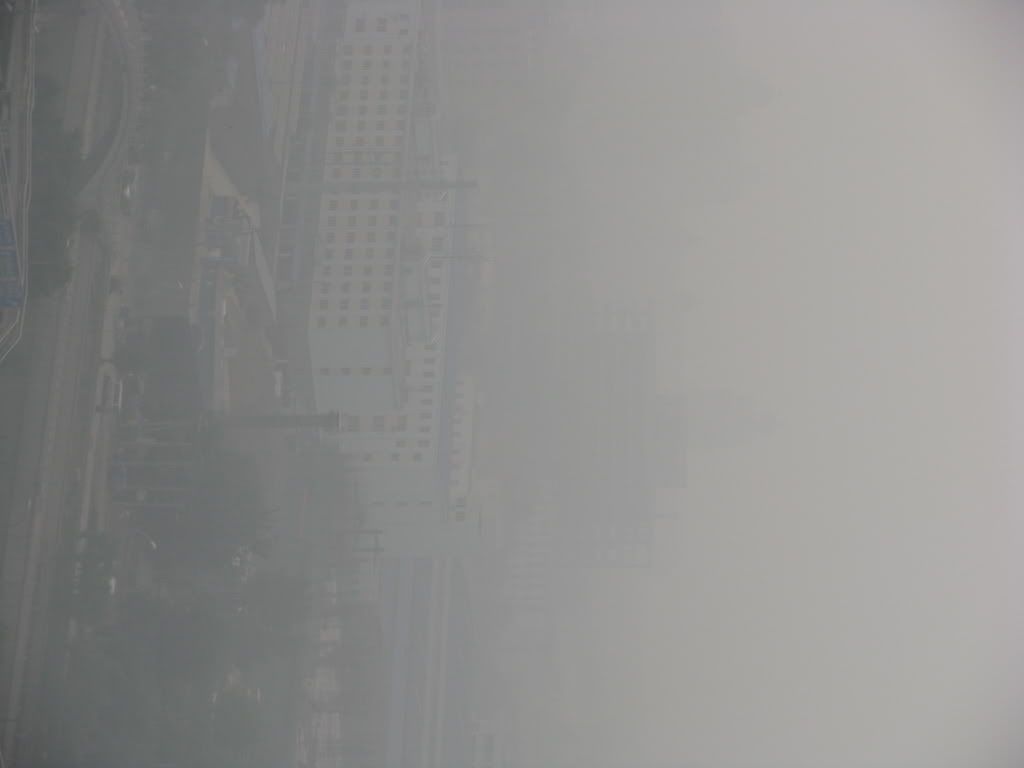James Fallows, The Atlantic – 07 Jan 2009 12:34 pm
As attentive readers may recall, the air in Beijing through the six months before the Olympic games was almost unbelievably horrible. Lest we forget: this was the view out my window in mid-June, which was not that different from how it had been day upon day through the spring and early summer.
But even as I was wheezing my way around town and truly getting depressed by no view of sun and sky (and being told by a doctor that I should stop smoking, when I’d never started), I was reporting in the Atlantic on plans to get things cleaned up by the time of the Olympics. The first two days of the Games looked pretty bleak — but then a line of thunderstorms moved through, and the air looked far better, and the environmental threat to the Games was averted.
Since then, the air in Beijing has seemed better — not all of the time, God knows, but more than before. How much of the improvement is due to factories being shut down because of the recession? (They must have been running 40 hours a day in the spring, given how bad things were then.) How much because of typically strong late-fall winds blowing in from the northwest? How much an actual long-term change? I don’t know.
But, courtesy of a tip from an engineer at NASA, here is new evidence that all the anti-pollution steps taken because of the Olympics really did make a difference in air-quality measures in August — and, it seems, some of the time since then.
The NASA map below will make more sense if you read the full report, here. Highlight version: the deep red west of Shanghai and north of Hong Kong (where Shenzhen and Dongguan are), plus through the central coal-and-factory belt in places like Shanxi province, is a bad sign. The light green around Beijing is relatively good! (The red zone on the coast just east of Beijing is the city of Tianjin.)

As the NASA report says of Beijing’s special Olympic anti-pollution rules:
During the two months when restrictions were in place, the levels of nitrogen dioxide (NO2) — a noxious gas resulting from fossil fuel combustion (primarily in cars, trucks, and power plants) — plunged nearly 50 percent. Likewise, levels of carbon monoxide (CO) fell about 20 percent.
Why does this matter? Because it shows that corrective steps can improve even the most hopeless-seeming environmental disasters. It’s worth trying to do something, rather than just hunkering down in bed and trying to take very, very shallow breaths — my strategy in the months from April to July.
In other words, Yes We Can.
